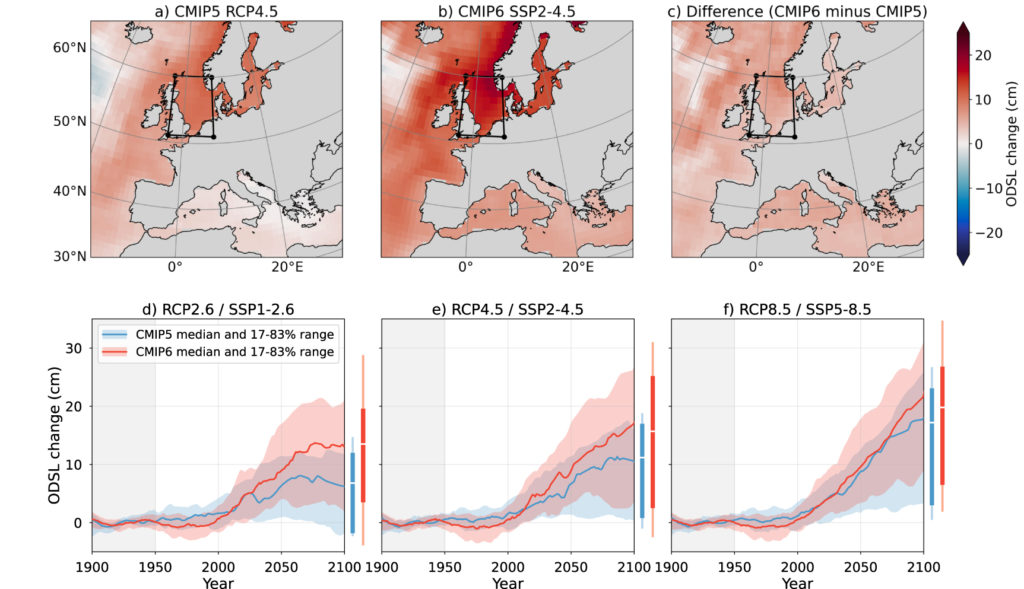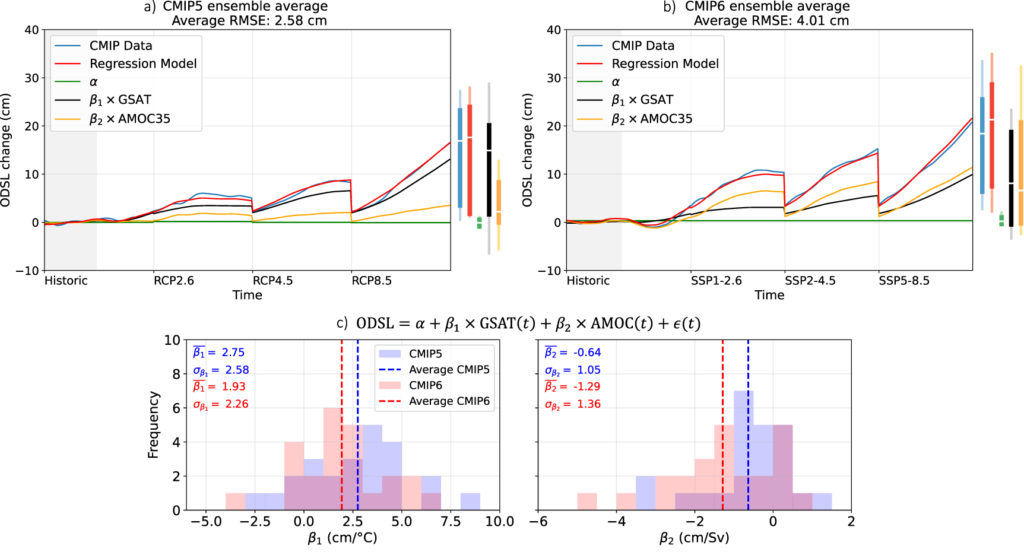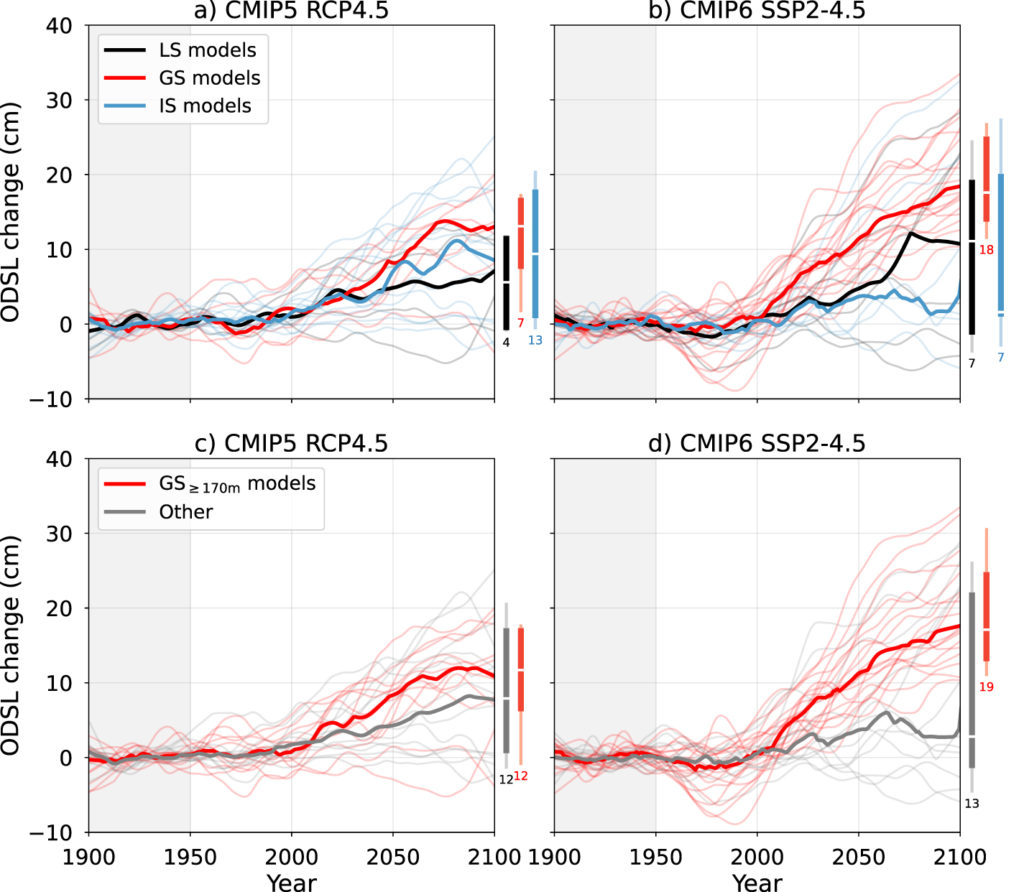
As a consequence of global warming, sea level is rising almost everywhere around the globe. This is the result of melting glaciers and ice sheets, global warming of the ocean but also changes in ocean currents. We call this last contribution Ocean Dynamic Sea level (ODSL).
Why are CMIP6 models projecting a larger increase in ocean dynamic sea level in the North Sea over the coming century than CMIP5 models? We point out a few processes that play a role in this new publication: “Processes explaining increased ocean dynamic sea level in the North Sea in CMIP6“.
Ocean dynamic sea level (ODSL) is expected to be one of the major contributors to sea level rise in the North Sea during the 21st century. This component is defined as the spatial sea level anomaly due to ocean currents, wind stresses and local thermosteric and halosteric effects. Climate models from CMIP5 and CMIP6 show a large spread, as well as an increase between CMIP5 and CMIP6 North Sea ODSL projections.

In this study, we apply linear regression models on CMIP5 and CMIP6 data to get a better understanding of the processes that influence ODSL change in the North Sea. We consider three different predictors: global mean surface air temperature (GSAT), global mean thermosteric sea level, and the Atlantic meridional overturning circulation (AMOC).
We find that neither global surface air temperature nor global mean thermosteric sea level can reproduce ODSL projections based on a linear relation in CMIP6, whereas this was the case for CMIP5.
Including the strength of the AMOC as an additional predictor enables us to reproduce long-term changes in ODSL for both ensembles. Our results show that ODSL in the North Sea is projected to increase with increasing GSAT and weakening AMOC. The sensitivity to the AMOC increased in CMIP6, which points to a difference in model dynamics between CMIP5 and CMIP6, and a more important role of the deep ocean.

To investigate this further, we analyse mixed layer depth data in the North Atlantic. This serves as a proxy for heat and salt transport divergence which is not available in many of the CMIP models.
We find that models with a relatively deep mixed layer in the Greenland Sea over the period 1985–2004, project larger rise in ODSL in the North Sea for both CMIP5 and CMIP6. This implies that the location of deep water formation in the North Atlantic, indicated by a deep mixed layer, potentially influences ODSL in the North Sea.

The number of these models increased from CMIP5 to CMIP6. This points, again, to a different sensitivity to larger scale processes in the ocean, and it possibly explains part of the difference in ODSL between the two ensembles.

Leave a Reply